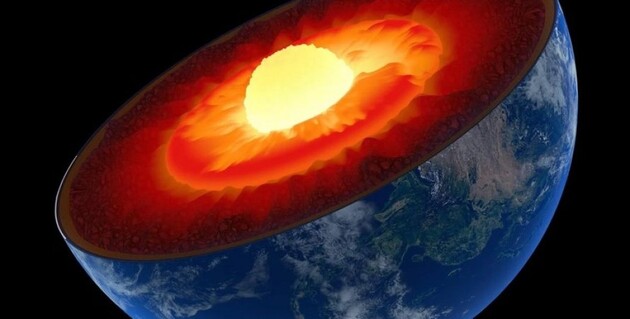And this is not the first time.

Scientists from the University in Beijing said that the inner core of the Earth can change the direction of its rotation. According to researchers, in the last decade it has practically stopped rotating and is now spinning in the opposite direction, reports Science Alert.
The fact that the inner core rotates in relation to the mantle above it, scientists learned relatively recently, it was confirmed in 1996. Until then, the idea that the inner core of the Earth rotates separately from the rest of the planet was an unproven theory predicted by a model of our planet's magnetic field.
Read also: Scientists managed to control lightning with lasers for the first time
Since then, scientists have been trying to figure out how fast or slow the core rotates. At first it was believed that it makes a smooth reversal every 400 years. This happens under the influence of an electromagnetic torque that twists and is balanced by gravitational pull. But soon another theory appeared, that the core rotates more slowly and makes such a revolution in 1000 years.
In the course of the new study, scientists used the same method that helped to find out that the core does rotate. In 1996, researchers tracked seismic wave readings from recurring earthquakes, called doublets, that traveled through the inner core from the southern Atlantic to Alaska between 1967 and 1995.
If the inner core had not moved, the shock waves would have to repeat the path. But scientists have shown that in the period from the 1960s to the 1990s, seismic waves became faster by fractions of a second.
In the new study, scientists used this archival data, comparing it with later observations of seismic waves. They found that since about 2009, the paths that had previously shown significant temporal variation had not changed much as seismic waves traveled through the core and out the other side. Any difference in time has disappeared.
“This globally consistent pattern suggests that the rotation of the inner core has recently stopped,” the scientists said.
According to the researchers, this stop is related with rotation reversibility. The nucleus begins to rotate in the other direction as part of a seventy-year oscillation. According to their calculations, a small imbalance of electromagnetic and gravitational forces would be enough to slow and then reverse the rotation of the inner core. This is happening now.
Scientists believe that the nucleus changes its direction of rotation approximately every 60-70 years.
Related video
Earlier, scientists from the Chinese Academy of Sciences stated that Earth's inner core may be in a superionic state. According to the researchers, the heavy elements of the deep bowels of our planet form crystal lattices, and the light ones flow freely between them.




